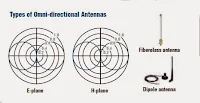 |
| RCA HDTV Outdoor Durable Yagi Antenna |
ANT751 - Outdoor Antenna - RCA Antennas -
This compact outdoor antenna is designed to maximize signal collection including all HD and SD in digital formats via UHF and VHF frequencies. An HDTV tuner and display are required to experience high definition.Features (continued)
- Adapts to almost any outdoor or attic setting
- Ultra compact design
- Snap lock elements and easy fold out assembly
- Superior construction to withstand tough outdoor conditions
- Heavy duty locking mast clamp
- Cross phase multi element design
- Includes mounting hardware and 75ohm matching transformer
- One year limited warranty
 |
| RCA ANT751 Elements (courtersy : https://forum.tvfool.com/showthread.php?t=16264) |
Compact Indoor/Outdoor Yagi TV Antenna
 |
| Double Antenna for more channel reception |
This RCA Compact Indoor /Outdoor Antenna provides both network
and local television in full 1080 HD quality, for free. Its
pre-assembled design and included mast and mounting hardware provide a
variety of placement options, while its enhanced signal reception
outperforms antennas available from other manufacturers. Don’t settle
for a lesser picture or fewer channels when you know your TV is capable
of delivering much more!
- Cross-phase, multi-element design provides enhanced reception technology for more channels
- Supports up to 1080i HDTV broadcasts
- Receives UHF and VHF channels = more content!
- Pre-assembled design with easy-lock fold-out UHF reflector and snap-lock elements
- Mast, mounting hardware and 75-ohm transformer included for placement indoors or outdoors
 |
| RCA Antenna Installation at Attic |
UHF and VHF Channels in HD
Many antennas on the market are optimized to receive only UHF
broadcasts and do not reliably receive VHF. All RCA TV antennas are
precision-tuned to receive both UHF and VHF frequencies and will provide
you with the most HD content.
Buy Now At Amazon >>>>
Getting the Best Reception
The amount and quality of the channels you receive will depend on the following:
1) Channels being broadcast in your area
2) Broadcast tower locations
 |
| RCA ANT751 Durable Outdoor Antenna |
3) Strength of the broadcast signals
4) Line of sight and environmental terrain
Get Further details here >>>>
Customer Says about this antenna :
 |
| Winegard HDTV Antenna |
There's no magic antenna that works for everyone.
It all depends on your distance to the broadcast station, whether your
channels are UHF or VHF, and existance of inteference/obstructions. To
find out if it works for you, go to antenna point.com and see
1. How far you are from the broadcast station - If you're less than 40 miles without anything in between (hills/trees/buildings) then it will work. I'm 37 mile from the main one, so I get all channels. If more than 40 miles then try a bigger outdoor antenna, like the Winegard Antenna.
2. Whether the channels are UHF only or both UHF and VHF - If UHF only then you're in luck, because you might be able to find a smaller indoor antenna that will work fine. If both UHF/VHF then you'll need an antenna like this RCA NT751R.
Quality - Its aluminum construction is lightweight and won't corrode. A sturdy mount is included (unlike other antennas). It can flip 90 degrees, allowing mounting on both horizontal and vertical surfaces.
More things to buy - You'll need to buy bolts/screws to fasten the mount into your roof/wall. You'll also need to buy your own coaxial cable. I also bought a 4ft pole to extend the height of the antenna past the crest of my roof. The round pole drops into the mount easily and the antenna has a U brace that clamps onto the pole.
Installation - The hard part will be installation and wiring. Point the smaller end toward the broadcast station for best reception. National Electrical Code also requires grounding it in case of lightning strike. If possible, you should try attic installation first, to hide the antenna from view and to forgo the grounding requirement. In my case, I lost a couple of important channels (out of around 55), so I decided to mount it on the roof.
1. How far you are from the broadcast station - If you're less than 40 miles without anything in between (hills/trees/buildings) then it will work. I'm 37 mile from the main one, so I get all channels. If more than 40 miles then try a bigger outdoor antenna, like the Winegard Antenna.
2. Whether the channels are UHF only or both UHF and VHF - If UHF only then you're in luck, because you might be able to find a smaller indoor antenna that will work fine. If both UHF/VHF then you'll need an antenna like this RCA NT751R.
Quality - Its aluminum construction is lightweight and won't corrode. A sturdy mount is included (unlike other antennas). It can flip 90 degrees, allowing mounting on both horizontal and vertical surfaces.
More things to buy - You'll need to buy bolts/screws to fasten the mount into your roof/wall. You'll also need to buy your own coaxial cable. I also bought a 4ft pole to extend the height of the antenna past the crest of my roof. The round pole drops into the mount easily and the antenna has a U brace that clamps onto the pole.
Installation - The hard part will be installation and wiring. Point the smaller end toward the broadcast station for best reception. National Electrical Code also requires grounding it in case of lightning strike. If possible, you should try attic installation first, to hide the antenna from view and to forgo the grounding requirement. In my case, I lost a couple of important channels (out of around 55), so I decided to mount it on the roof.













